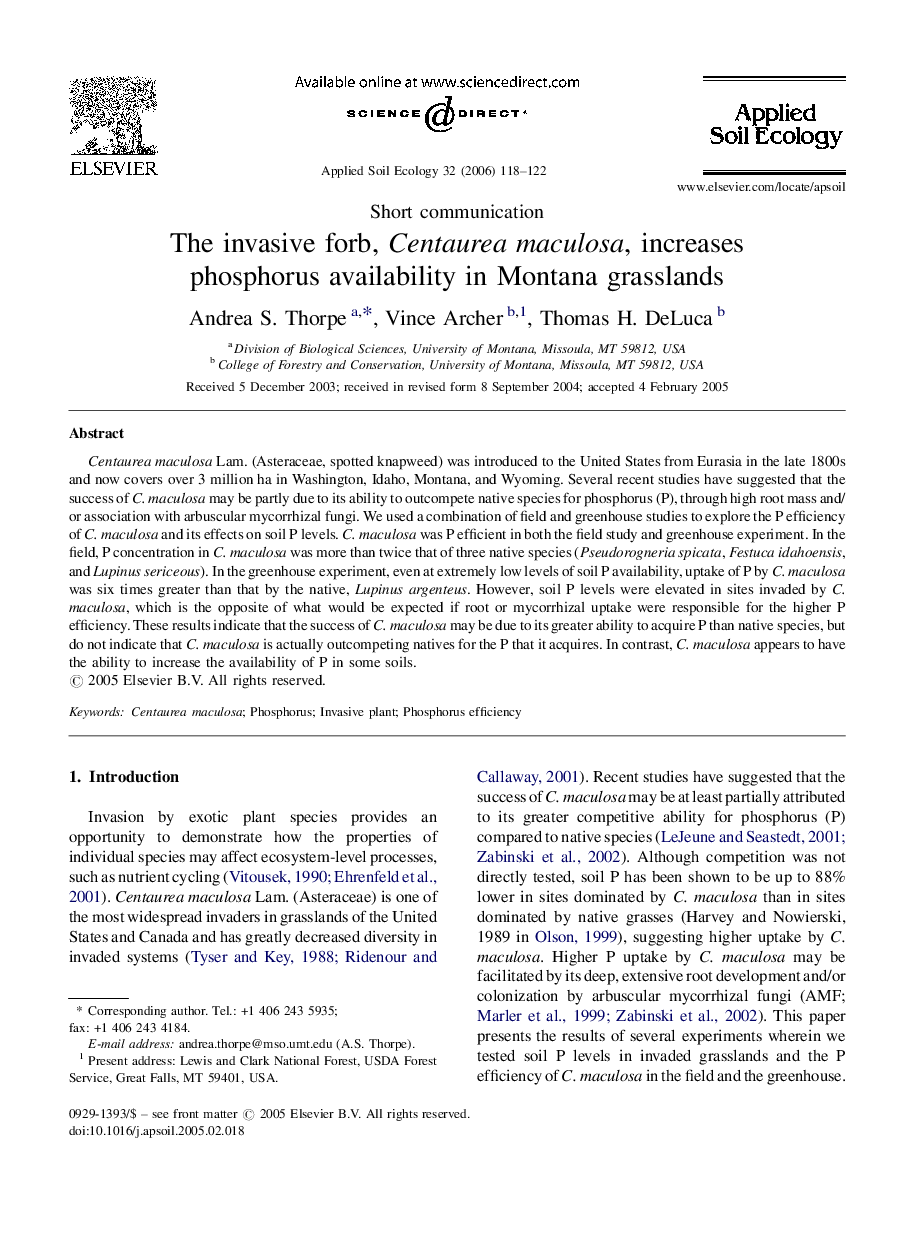| Article ID | Journal | Published Year | Pages | File Type |
|---|---|---|---|---|
| 4383344 | Applied Soil Ecology | 2006 | 5 Pages |
Abstract
Centaurea maculosa Lam. (Asteraceae, spotted knapweed) was introduced to the United States from Eurasia in the late 1800s and now covers over 3 million ha in Washington, Idaho, Montana, and Wyoming. Several recent studies have suggested that the success of C. maculosa may be partly due to its ability to outcompete native species for phosphorus (P), through high root mass and/or association with arbuscular mycorrhizal fungi. We used a combination of field and greenhouse studies to explore the P efficiency of C. maculosa and its effects on soil P levels. C. maculosa was P efficient in both the field study and greenhouse experiment. In the field, P concentration in C. maculosa was more than twice that of three native species (Pseudorogneria spicata, Festuca idahoensis, and Lupinus sericeous). In the greenhouse experiment, even at extremely low levels of soil P availability, uptake of P by C. maculosa was six times greater than that by the native, Lupinus argenteus. However, soil P levels were elevated in sites invaded by C. maculosa, which is the opposite of what would be expected if root or mycorrhizal uptake were responsible for the higher P efficiency. These results indicate that the success of C. maculosa may be due to its greater ability to acquire P than native species, but do not indicate that C. maculosa is actually outcompeting natives for the P that it acquires. In contrast, C. maculosa appears to have the ability to increase the availability of P in some soils.
Related Topics
Life Sciences
Agricultural and Biological Sciences
Ecology, Evolution, Behavior and Systematics
Authors
Andrea S. Thorpe, Vince Archer, Thomas H. DeLuca,
